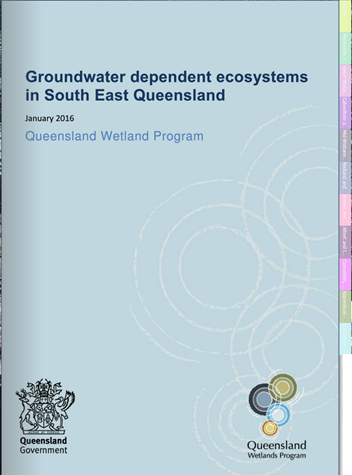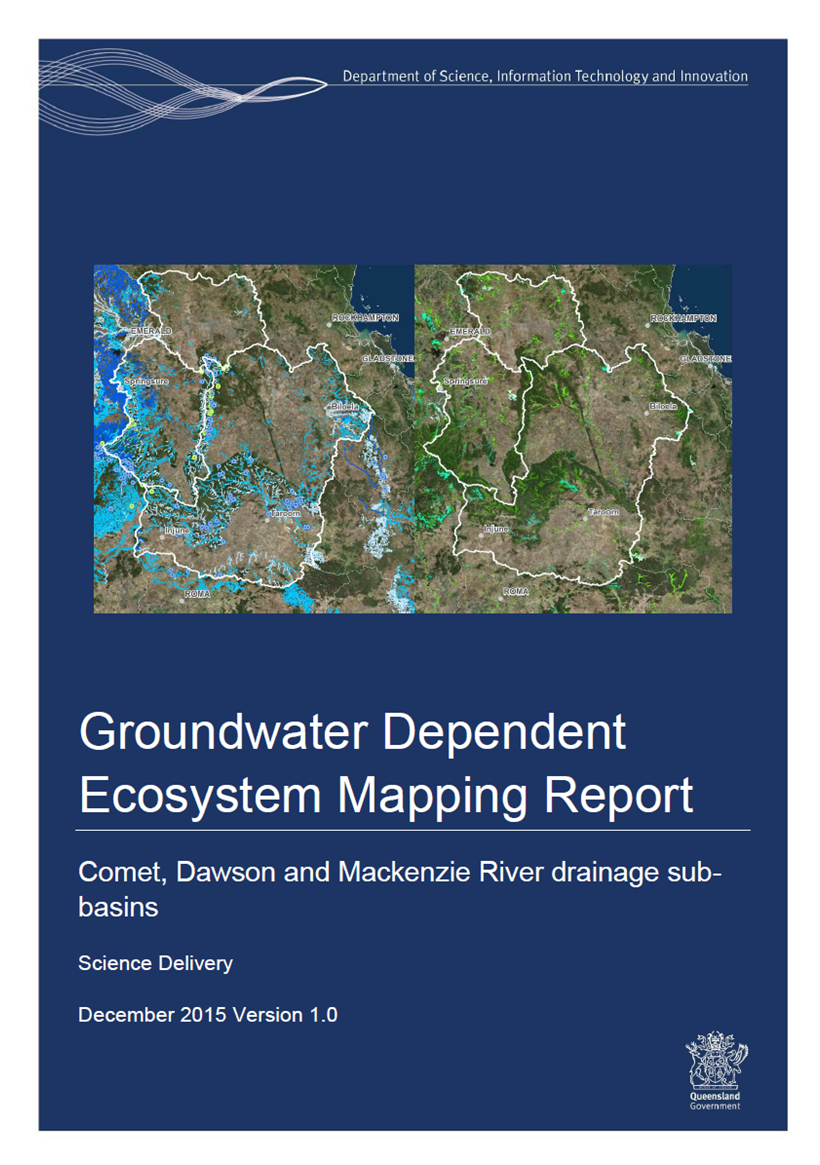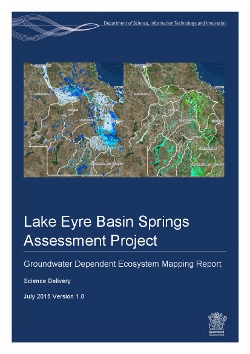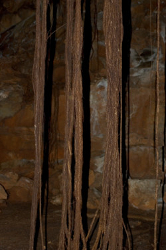|
|
Groundwater dependent ecosystem handbooksThe groundwater dependent ecosystems (GDEs) handbooks provide consolidated information on where and how groundwater moves through a catchment and where groundwater may interact with ecosystems. They are designed to assist managers to make informed decisions about catchment management activities. The GDE handbooks provide a broad overview of GDEs, how they are mapped, where they may exist in the landscape, and how they may relate to groundwater. Related pages
Quick facts
Handbook for groundwater dependent ecosystems in South East Queensland View, print or download the complete document in PDF format Chapter 1 gives an introduction to groundwater dependent ecosystems (GDEs) in Queensland. Chapters 2-9 focus on the catchment summaries for:
Chapters 10 and 11 include definitions and rule-set similarities. Groundwater Dependent Ecosystem Mapping Report: Comet, Dawson and Mackenzie River drainage sub-basins View, print or download the complete document in PDF format This report documents the methods, conceptual understanding and technical outputs developed during the delivery of the GDE mapping for the Comet, Dawson and Mackenzie River catchments. Section one provides a brief overview of the key definitions, methods and products developed, including technical project highlights. Section two includes a series of summary maps illustrating the area where each mapping rule-set was applied in each of the three drainage sub-basins in the study area. Section three outlines the conceptual understanding developed during technical workshops, details the mapping rule-sets underlying the GDE mapping outputs, and identifies the data sets used in mapping. Section four includes a series of summary maps illustrating the areas where through the application of GDE mapping rule-sets, potential GDE supporting aquifers have been identified. Section five discusses technical issues encountered and implications for future work, and section six is a brief conclusion. Lake Eyre Basin Springs Assessment Project: Groundwater Dependent Ecosystem Mapping Report View, print or download the complete document in PDF format The Lake Eyre Basin Springs Assessment (LEBSA) project provides the latest scientific data on Groundwater Dependent Ecosystems (GDEs), including spring ecosystems, in thirteen drainage sub-basins covering approximately 714,232 square kilometres or 41.3% of Queensland. The thirteen drainage sub-basins mapped were: Barcoo River, Bulloo River, Cooper Creek, Diamantina River, Flinders River, Lake Frome, Nogoa River, Paroo River, Saxby River, Suttor River, Thomson River, Wallam Creeks, and Warrego River. Section one provides a brief overview of the key definitions, methods and products developed during the LEBSA project, including technical project highlights. Section two includes a series of summary maps illustrating the area where each mapping rule-set was applied in each of the 13 drainage sub-basins in the LEBSA study area. Section three outlines the conceptual understanding developed during technical workshops (step 3a), details the mapping rule-sets underlying the GDE mapping outputs (step 3b), and identifies the data sets used in mapping (step 3c). Section four discusses technical issues encountered and implications for future work, and section five is a brief conclusion. Last updated: 30 August 2016 This page should be cited as: Queensland Government, Queensland (2016) Groundwater dependent ecosystem handbooks, WetlandInfo website, accessed 8 May 2025. Available at: https://wetlandinfo.des.qld.gov.au/wetlands/facts-maps/gde-background/gde-faq/gde-map-rules/handbook-all.html |

 — Department of the Environment, Tourism, Science and Innovation
— Department of the Environment, Tourism, Science and Innovation


